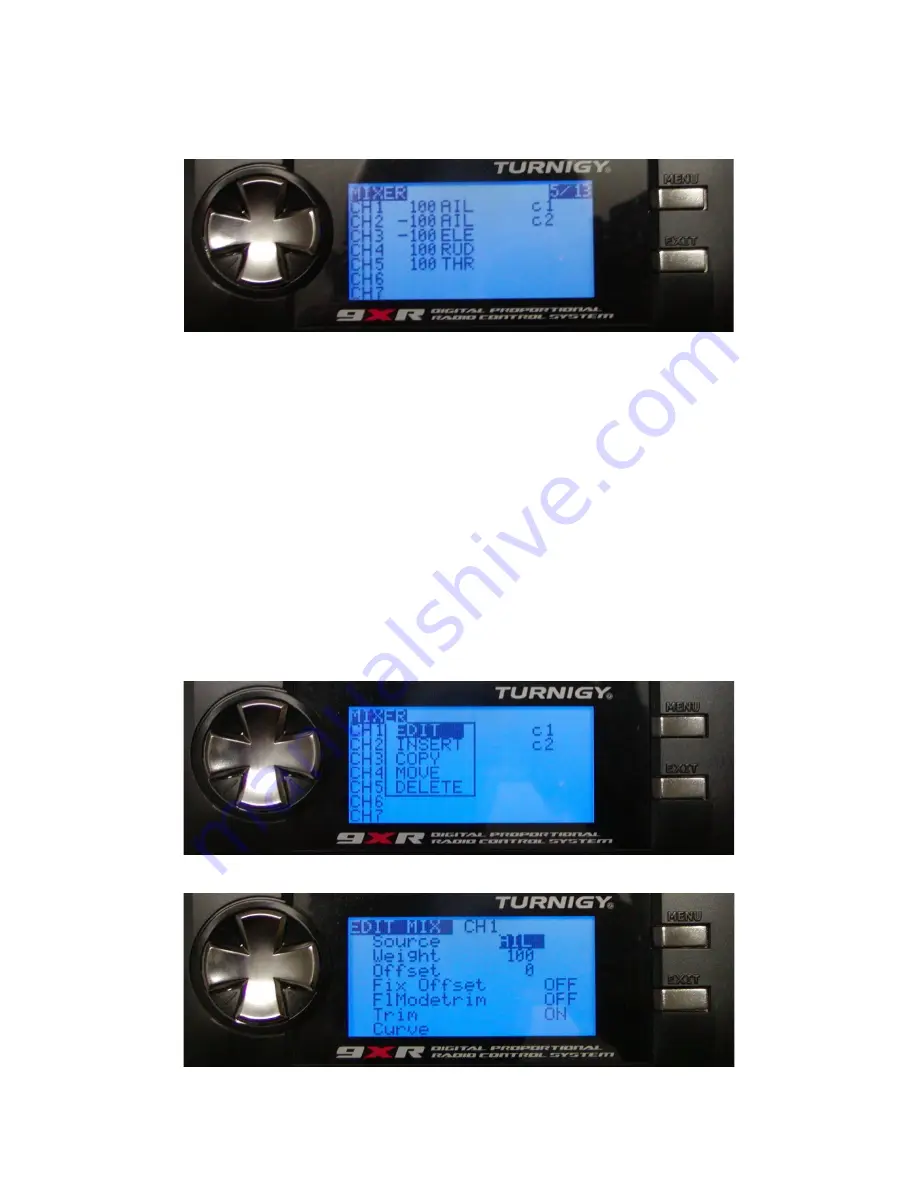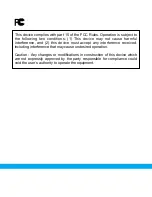
Here’s what a simple mixer page might look like. This one has two channels for aileron (CH1 and
CH2) to allow the two servos to be controlled separately. Both get their input from the aileron stick.
The various channels numbered on the left of the screen are outputs from the mixer to the servo. For
example CH1 is servo slot number 1 on your receiver. CH2 is servo slot number 2, and so on.
What this screen is telling you is, for example, that the rudder stick input is being routed by the
mixer, with a 'weight' of 100%, to the servo plugged into CH4 on the receiver. Similarly for the
elevator, throttle and aileron channels.
In this case, the switch column is empty, meaning that the mixes are turned on all the time (the usual
situation for the stick inputs in a simple model). The curve column shows that c1 and c2 are being
applied to CH1 and CH2, the two aileron channels in this setup. They are providing aileron
differential (meaning that the ‘up’ aileron moves more than the ‘down’ aileron.
A channel without a mixer command line (such as CH6 here) will simply centre any servo connected
to it. The servo will not move at all as it has no variable input.
Edit Mix
Let’s assume you have highlighted a channel in the screen shown above and given a long press of
the MENU key. You see this screen:
Then you select Edit and get this:
Ersky9x Explained – version 1
page
26
of 45
















































